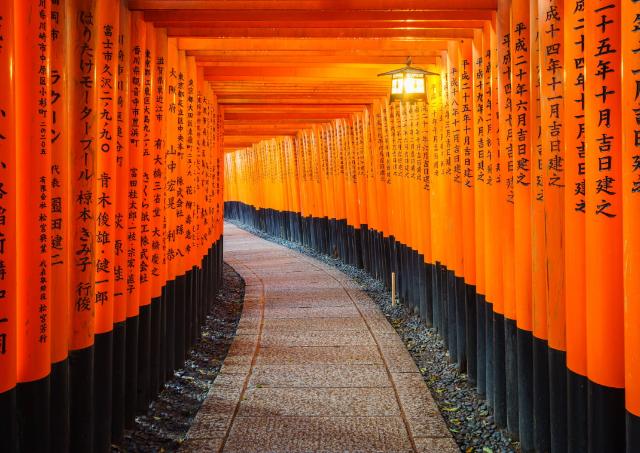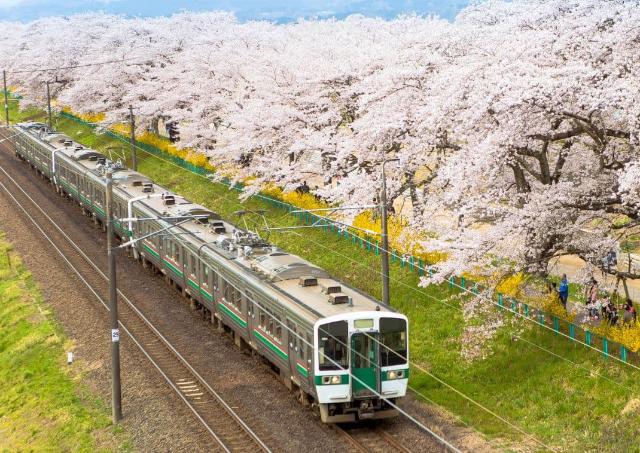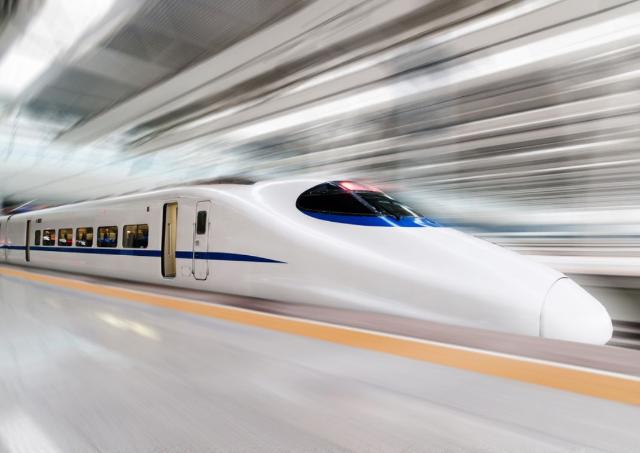IC Card 101: A Traveller’s Guide to Navigating Japan with Ease
Japan’s transportation system is renowned for being extensive, timely, and easy to navigate. Using public transport in Japan is often an exciting part of people’s trip! While Japan’s extensive network of trains, buses, and subways can seem daunting at first, with the help of an IC Card, getting around is a breeze. In this guide, we’ll cover everything you need to know about Japanese IC Cards, including how to use your Suica card, where to get one, and why they’re essential for a smooth travel experience in Japan. You’ll be a Japanese public transport expert in no time!
What is an IC or Suica Card?
This is the first question, you’re probably asking. It’s common to hear words like Suica or Pasmo and immediately feel very confused! Don’t worry, it’s easier than it sounds. An IC Card (Integrated Circuit Card) is a rechargeable smart card, also known as a prepaid card, used for electronic payments on public transportation in Japan. The Welcome Suica mark signifies designated ticket vending machines and fare adjustment machines where travellers can conveniently top up their cards and check their balances.
These cards are incredibly versatile and convenient and can be used on trains, buses, subways, and even for shopping at convenience stores, vending machines, and even some restaurants.
There are currently ten major IC cards available across Japan but the most popular are Suica, Pasmo, ICOCA, and Kitaca. While each card is associated with a specific region (for example, Suica is primarily used in Tokyo), they are interchangeable across most of Japan. This means you can use a Suica card in Osaka or an ICOCA card in the Tokyo Metropolitan area without any issues!
Why should you get an IC Card?
Travelling in Japan without an IC Card can slow you down, so it’s highly recommended to pick one up.
Firstly, it’s much more convenient! There’s no need to buy individual tickets for every ride, you simply tap your card at the ticket gates and go. This means you save a lot of time by avoiding long queues at ticket machines, especially during peak hours. Who wants to spend their time travelling, waiting in line? Plus, it reduces paper waste by eliminating the need for single-use tickets.
Japan loves convenience, so you can use your IC Card for much more than just transportation. It’s accepted at many retail outlets and vending machines. This can be very helpful for visitors who would rather not deal with small change or want to use their foreign credit card less. For instance, you can effortlessly purchase soft drinks and coffee from a vending machine using your IC card, enhancing your travel experience by eliminating the need for cash transactions.
What are the different types of IC cards in Japan?
While there are several IC Cards available, the commonly used ones that you’re most likely to hear about are:
1. Suica Card:
This IC card is primarily used in the Tokyo Metropolitan Area and the surrounding Kanto region. It can be used on JR East trains, subways, buses, and for shopping.
2. Pasmo Card:
Also used in Tokyo and the Kanto region, Pasmo works on non-JR trains, subways, and buses. It can also be used for shopping.
3. ICOCA Card:
Popular in the Kansai region (Osaka, Kyoto, etc.), it’s compatible with JR West trains and other transportation networks.
4. Kitaca Card:
Used in Hokkaido, it works on JR Hokkaido trains and other services.
How to use a Suica Card (and other IC Cards)
Using an IC Card is incredibly straightforward. This step-by-step guide will make sure you’re ready for any trip.
1. Purchasing and loading your card
You can buy a Suica or Pasmo card at JR East ticket machines, major train stations, and airports like Narita and Haneda. To load your funds, insert your card into the ticket machine, select the amount you want to add (usually in increments of ¥1,000), and insert cash. Look for the 'Welcome Suica mark' on ticket machines and ATMs to easily top up your card and check balances.
The machine will update your balance. They are typically next to entrance and exit gates and you’ll see the sign: チャージ (chāji). You can also use Apple Pay with the Mobile Suica app to conveniently top up and manage your Suica card funds directly from your iPhone or Apple Watch.
2. Tapping in and out with your Suica
When entering a train station, tap your card on the reader at the ticket gate. The fare will automatically be deducted when you tap out at your destination. If you forget your card, don’t worry, you can still buy a paper ticket!
3. Using your IC card on buses
On buses, tap your card on the card reader next to the driver when boarding, you’ll need to tap again when you exit the bus. The fare is calculated based on the distance travelled.
4. Shopping and other uses
Look for the IC Card logo at convenience stores, vending machines, and some restaurants. Simply tap your card to pay.
5. Checking your balance
You can check your balance at ticket machines or by tapping your card on a reader at convenience stores.
Where to get Suica, Pasmo, and other IC Cards in Japan
There are a few places where you can reliably pick up a Suica card. Here are the most common!
1. Pick up an IC Card while you’re at the airport
Look out for the Welcome Suica Ticket Vending Machines or the service centres listed below. Travelers should look for the 'Welcome Suica mark' on ticket vending machines and ATMs to easily purchase and top up their cards.
Narita Airport:
Suica and Welcome Suica cards are available at JR East Travel Service Centres.Haneda Airport:
Purchase your card at the Monorail Suica & JR East Travel Service Centre.Kansai Airport:
ICOCA cards are available at JR West ticket offices.
2. You can pick up an IC Card at most major train stations
Just look out for a ticket counter or an automated kiosk and ask for help or follow the automated instructions on the screen. Most kiosks have an English, or other foreign language option.
Tokyo:
Head to JR East stations like Tokyo Station, Shinjuku Station, or Shibuya Station.Osaka:
Visit JR West stations like Osaka Station or Kyoto Station.
3. Convenience stores can be a good option
Some convenience stores, like Lawson and FamilyMart, sell IC Cards. You can approach the counter, and the staff will guide you through the process.
Welcome Suica and Pasmo Passport: Special IC cards for tourists
If you’re a short-term visitor, the Welcome Suica or Pasmo Passport are excellent options. Unlike regular Suica or Pasmo cards, these cards don’t require a deposit and are only valid for 28 days from the date of first use.
The Welcome Suica Card is particularly helpful for foreign tourists as it allows seamless travel across multiple transportation systems, including trains and buses, and can also be used for shopping and dining.
These prepaid IC cards offer unlimited rides on certain trains and buses within a specified area which can make your life very easy if you’re only staying in one area. Since there’s no deposit, refunds aren’t available. Make sure to use up the remaining balance!
If you’re a person who regularly visits Japan or are staying longer than a month, then getting a regular IC card will be more useful, otherwise this could be an ideal option!
Online purchase options for Welcome Suica Cards
Planning ahead can make your travel experience smoother, and purchasing a Welcome Suica card online is a great way to do just that. While you can’t buy a regular Suica card online, the Welcome Suica card is available for purchase online. This option is perfect for tourists who want to have their Suica card ready for pickup as soon as they arrive in Japan.
Once you’ve made your purchase, you can pick up your Welcome Suica card at the airport or a designated location, saving you time and hassle. With your Welcome Suica card in hand, you’ll be ready to start exploring Japan’s transportation system with ease.
Mobile Suica and Virtual Cards
In the age of smartphones, carrying a physical Suica card might seem a bit old-fashioned. Luckily, you can set up a virtual Suica card on your mobile device, making your travel even more convenient. Here’s how you can do it:
Using Google Pay or iPhone Wallet with Suica
For those who prefer a digital wallet, adding your Suica card to Google Pay or iPhone Wallet is a fantastic option. This feature allows you to use your mobile device to tap in and out of ticket gates, making your travel experience even more convenient.
To set up Google Pay or iPhone Wallet with your Suica card, follow these simple steps:
Open the app:
Download and open the Google Pay or iPhone Wallet app on your mobile device.Add your Suica card:
Within the wallet app, search Suica or Pasmo between the Transportation cards, and add it. You may need to enter your card details, such as the card number and expiration date.Set up payment method:
Link a payment method, such as a credit or debit card, to your virtual Suica card.Ready to go:
Once set up, you can use your phone to tap in and out of ticket gates, making payments and traveling with ease.
Using your mobile device for transportation and shopping not only adds convenience but also ensures you always have your Suica card handy.
Tips for using your IC Card in Japan
Here are some top tips to navigate Japan with your IC card like a pro.
Keep your card handy:
Always have your IC Card easily accessible, as you’ll need it frequently. You don’t want to be caught fumbling at the IC Card reader and holding up the line!Recharge regularly:
Keep an eye on your balance and recharge as needed to avoid running out of funds mid-journey. It’s quick to recharge so better to be safe than sorry!Use for small purchases:
Save your coins by using your IC Card for small purchases at the convenience store cash register or vending machines.Check compatibility:
While most IC Cards are interchangeable, some rural areas may not accept them. Always have some cash as a backup.Keep it as a souvenir:
If you don’t want to return your card, keep it as a souvenir or for future trips to Japan. It won’t expire!
IC Card & Suica Card: Frequently Asked Questions
Can I use my IC Card outside its home region?
Yes, most IC Cards are interchangeable across Japan. For example, you can use a Suica card in Osaka or an ICOCA card in Tokyo.
What will happen if I lose my IC Card?
Unfortunately, IC Cards are not registered, so if you lose it, you can’t recover the balance. Treat it like cash.
Can I get a refund for my IC Card?
For regular IC Cards, you can get a refund of the remaining balance and the ¥500 deposit at designated ticket offices. Welcome Suica cards are non-refundable.
How long is an IC Card valid?
Regular IC Cards are valid for 10 years from the last use. Welcome Suica cards are valid for 28 days.
Can I use my IC Card for Shinkansen (Bullet Trains)?
No, IC Cards cannot be used for Shinkansen tickets. You’ll need to purchase a separate ticket at the Shinkansen station.
Managing your Suica Card
To get the most out of your Suica card, effective management is key. Here are some tips to help you navigate Japan with ease:
Check your remaining balance regularly:
Ensure you have enough funds for your journey by checking your balance at ticket machines, on your digital wallet (in case of virtual IC Card), or by tapping your card on a reader at convenience stores.Top up your Suica card:
Avoid running out of funds by topping up your card at ticket machines, convenience stores, or in your digital wallet app. The Suica app is a handy tool for managing your balance and transactions.Use the Suica app:
The Suica app allows you to check your balance, view your transaction history, and top up your card conveniently from your mobile device.Report a lost card:
If you lose your Suica card, report it to JR East immediately to prevent unauthorized use.
By following these tips, you can ensure a smooth and hassle-free travel experience with your Suica card.
Exchanging or refunding a Suica Card
If you need to exchange or refund your Suica card, the process is straightforward. You can do so at a JR East ticket office or a designated location. Refunds are available for unused cards or cards with a remaining balance. To exchange your card, you’ll need to provide your old card and a valid form of identification.
Keep in mind that Welcome Suica cards are non-refundable, so make sure to use up the remaining balance before your card expires. For regular Suica cards, you can get a refund of the remaining balance and the ¥500 deposit at designated ticket offices.
Combining Suica with other travel passes
Traveling in Japan can be even more efficient when you combine the Suica card with other travel passes like the Japan Rail Pass. Here’s how you can make the most out of both:
Japan Rail Pass and Suica card compatibility
The Japan Rail Pass and Suica card are both fantastic tools for navigating Japan, each serving unique purposes. Here’s how they can work together to enhance your travel experience:
Japan Rail Pass:
This pass offers unlimited travel on JR trains, including the famous bullet trains, for a set period (7, 14, or 21 days). It’s perfect for long-distance travel across Japan.Suica card:
A prepaid IC card that’s ideal for local travel on JR East trains, subways, and buses, as well as for making small purchases at convenience stores and vending machines.While the Japan Rail Pass covers your long-distance travel, the Suica card is perfect for local commutes and everyday purchases. Here’s how to use them together:
Travel on JR trains:
Use your Japan Rail Pass for unlimited travel on JR trains, including the Shinkansen (bullet trains).Local travel and payments:
Use your Suica card for subways, buses, and making payments for food, drinks, and other items at participating stores.
Remember, the Japan Rail Pass and Suica card are not interchangeable, so you’ll need to use them separately. However, combining them can make your travel experience more flexible and convenient, allowing you to seamlessly switch between long-distance and local travel.
By understanding how to use both the Japan Rail Pass and Suica card, you can navigate Japan’s extensive transportation network with ease and make the most of your trip.
An IC Card is the perfect companion for any traveller exploring Japan.
Whether you’re using a Suica Card in Tokyo, an ICOCA in Osaka, or a Welcome Suica as visitors to Japan, these cards make navigating Japan’s transportation system effortless. With the ability to use them for trains, buses, and even shopping, IC Cards are the ultimate travel companion.
So, the next time you’re planning a trip to Japan, make sure to pick up an IC Card. It’s your key to unlocking a stress-free and enjoyable travel experience.




